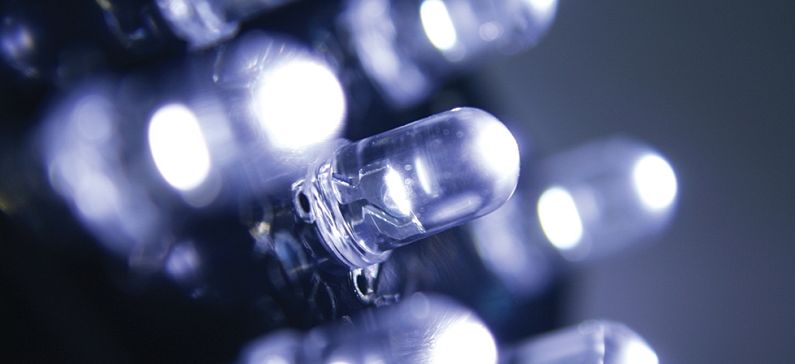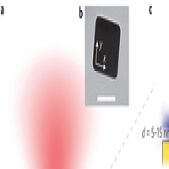
Greek scientist participates in research opening the way for faster LED
Duke University researchers, among them was Christos Argyropoulos, have made fluorescent molecules emit photons of light 1,000 times faster than normal, setting a speed record and making an important step toward realizing superfast light emitting diodes (LEDs) and quantum cryptography.
This year’s Nobel Prize in physics was awarded for the discovery of how to make blue LEDs, allowing everything from more efficient light bulbs to video screens. While the discovery has had an enormous impact on lighting and displays, the slow speed with which LEDs can be turned on and off has limited their use as a light source in light-based telecommunications.In an LED, atoms can be forced to emit roughly 10 million photons in the blink of an eye. Modern telecommunications systems, however, operate nearly a thousand times faster. To make future light-based communications using LEDs practical, researchers must get photon-emitting materials up to speed.In a new study, engineers from Duke increased the photon emission rate of fluorescent molecules to record levels by sandwiching them between metal nanocubes and a gold film.The results appear online October 12 in Nature Photonics.
«One of the applications we’re targeting with this research is ultrafast LEDs. While future devices might not use this exact approach, the underlying physics will be crucial» said Maiken Mikkelsen, an assistant professor of electrical and computer engineering and physics at Duke.
The researchers found they could achieve a significant speed improvement by placing fluorescent molecules in a gap between the nanocubes and a thin film of gold.To attain the greatest effect, Mikkelsen’s team needed to tune the gap’s resonant frequency to match the color of light that the molecules respond to. They plan to design a system with individual fluorescent molecule placed precisely underneath a single nanocube. They can achieve even higher fluorescence rates by standing the molecules up on edge at the corners of the cube.
Christos Argyropoulos is an Assistant Professor at the Department of Electrical Engineering, University of Nebraska-Lincoln. He received the Diploma of Electrical and Computer Engineering from the Aristotle University of Thessaloniki and continued his studies in Communication Engineering at the University of Manchester and in Electrical Engineering at Queen Mary University of London. In the beginning of 2011, he joined University of Texas, Austin working as a Postdoctoral Fellow under the supervision of Prof. Andrea Alù on analytical and computational modeling of linear and nonlinear plasmonics, thermal emitters, transformation electromagnetics and metamaterials. Between September 2013 and August 2014, Christos was a Postdoctoral Associate at the Center for Metamaterials and Integrated Plasmonics at Duke University working under the supervision of Prof. David Smith on analytical, computational and experimental aspects of linear and nonlinear integrated plasmonic systems, transformation electromagnetics and metamaterials for novel imaging applications.
His main research interests include computational electromagnetics, integrated optics, antenna engineering, transformation electromagnetics, microwave/mm-wave/THz engineering, optical communications, metamaterials and their applications, linear and nonlinear plasmonics and nanophotonics, photonics, active metamaterials, novel optical interconnects, thermal emission from plasmonic structures, graphene nanophotonics, and novel energy harvesting devices.








